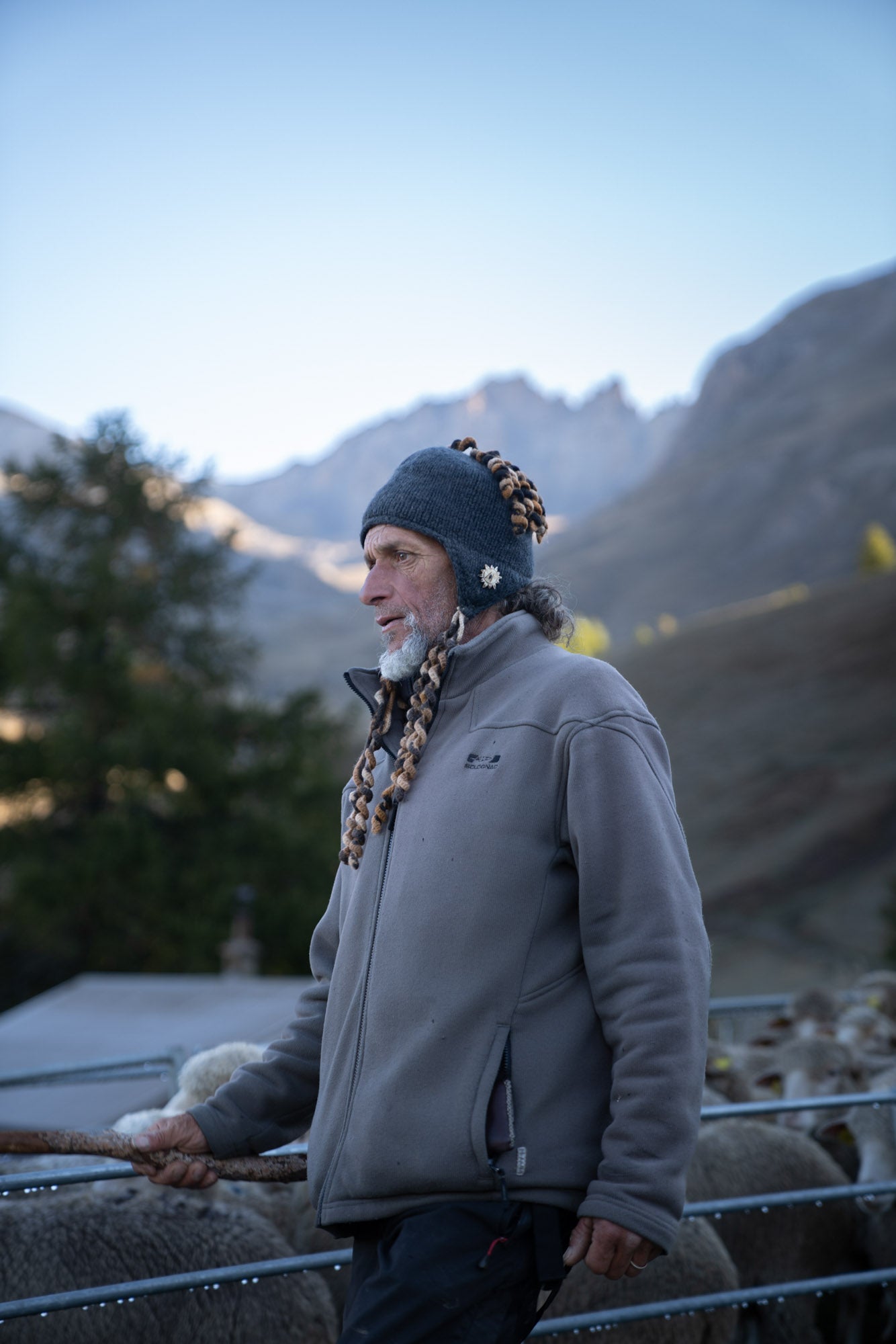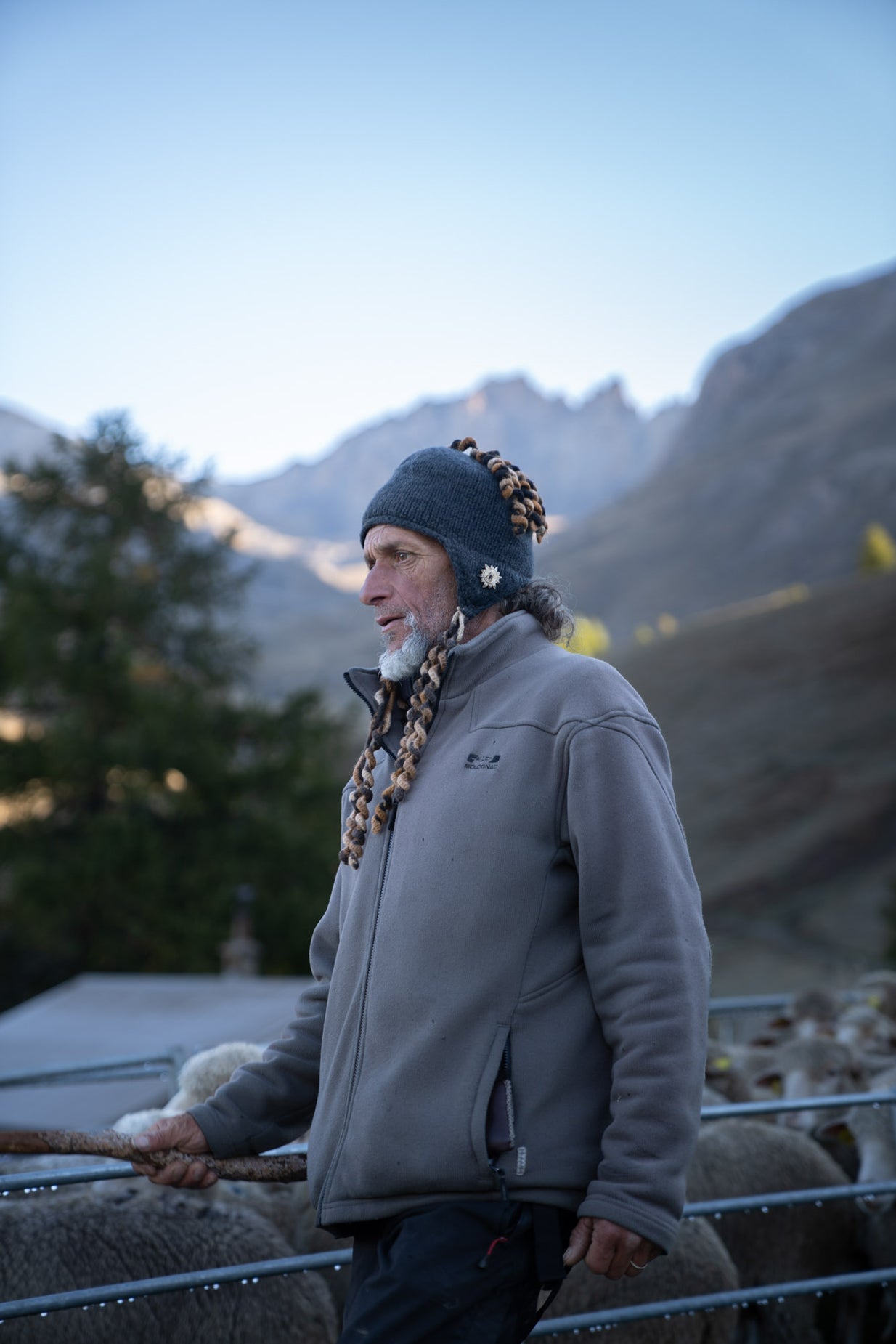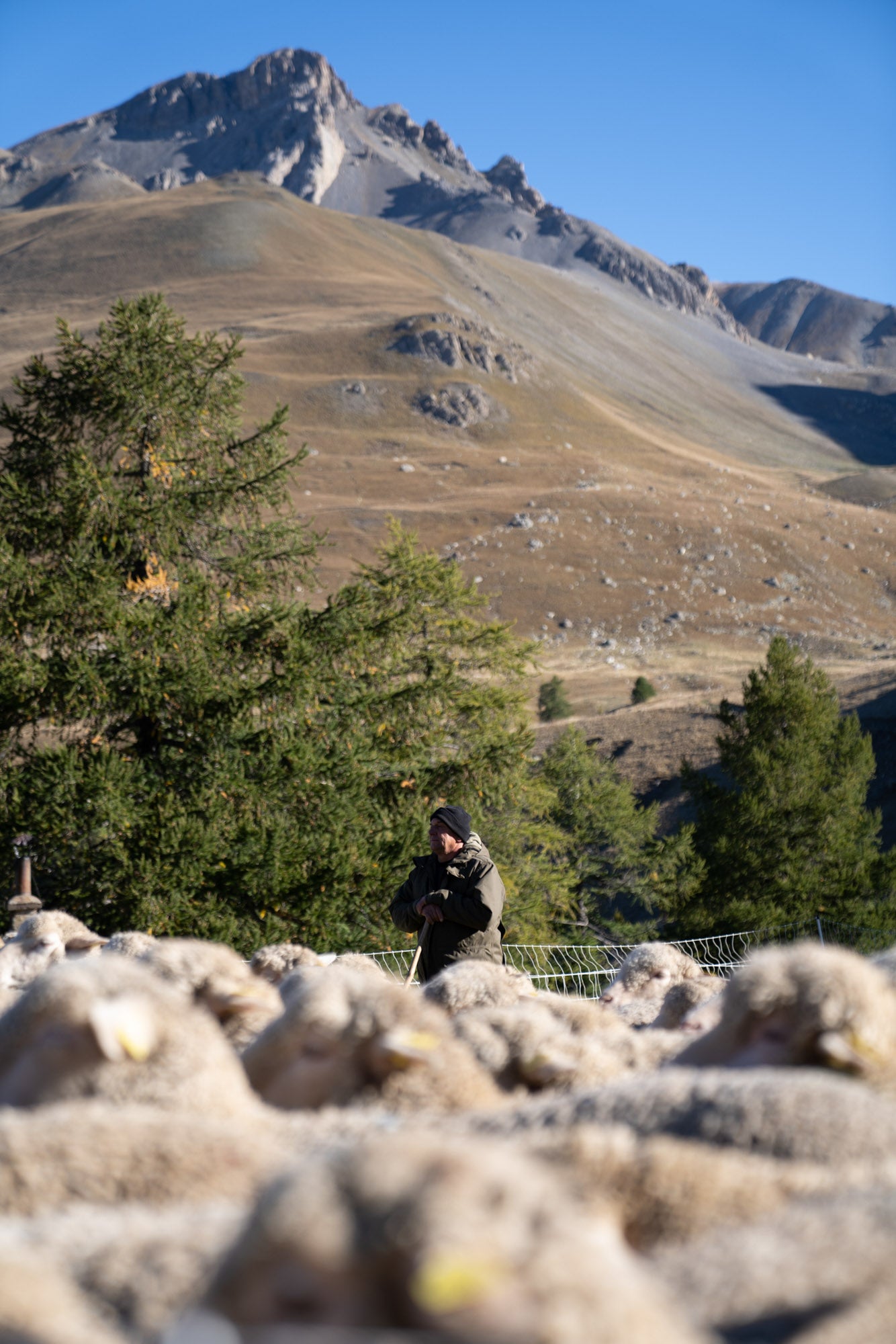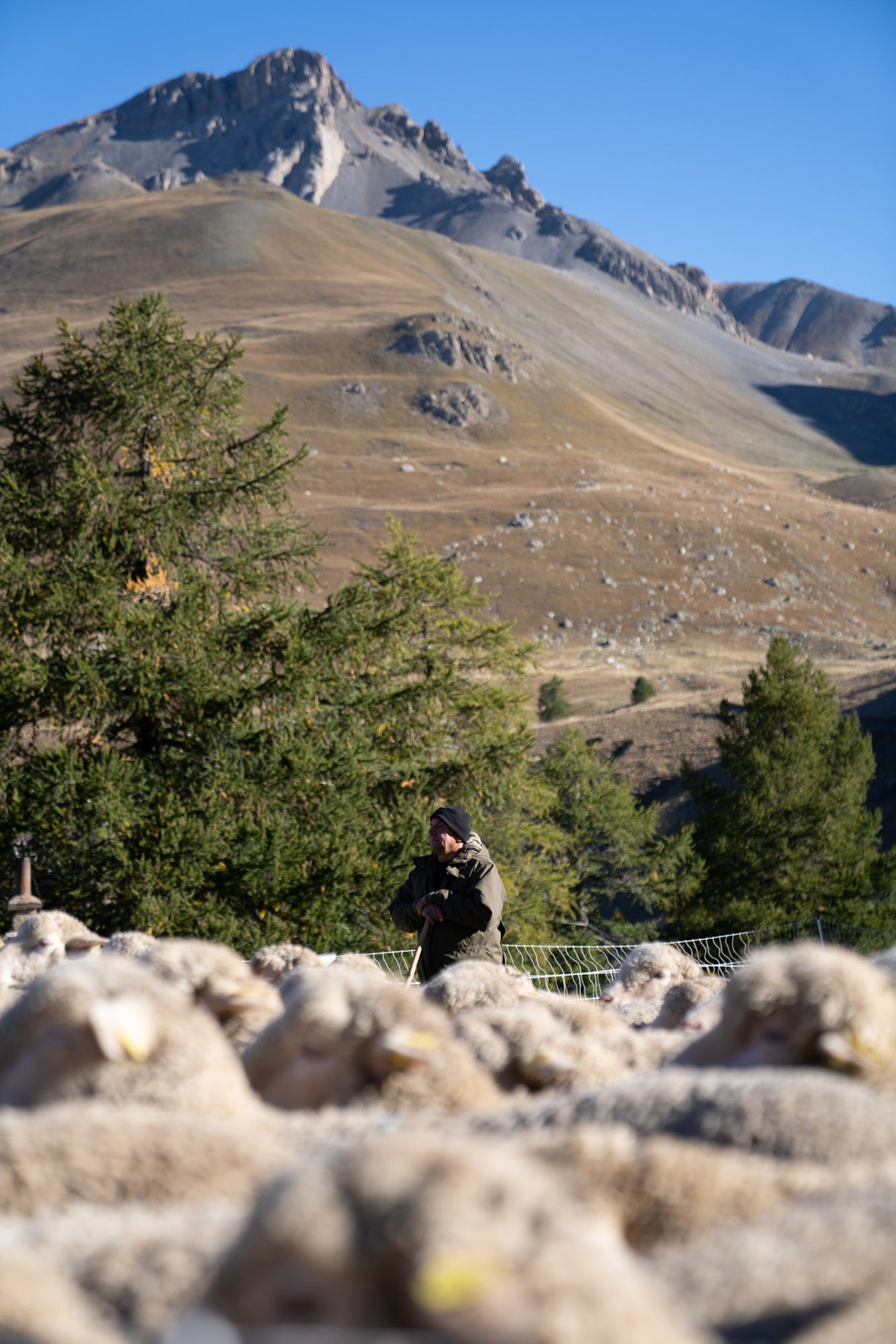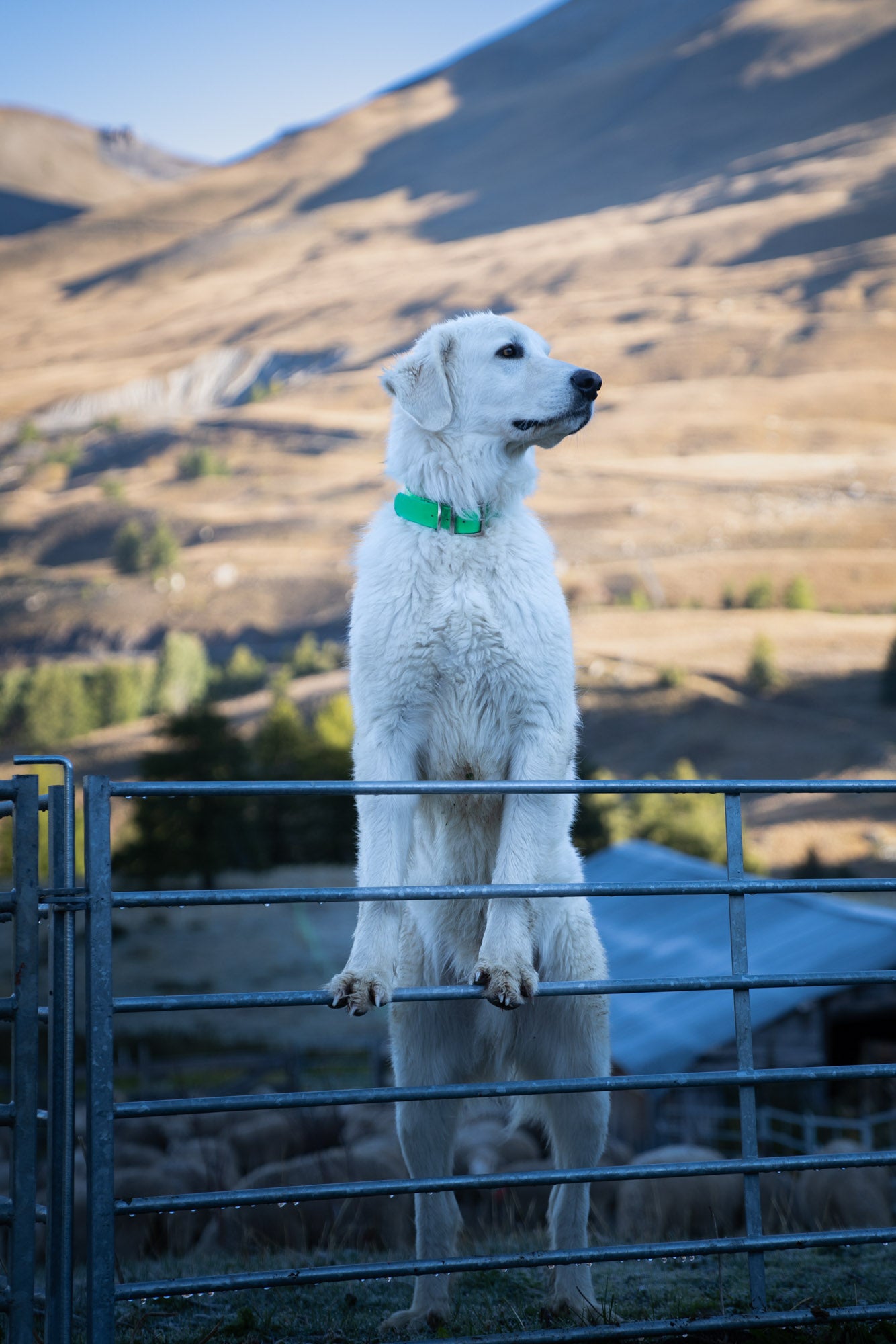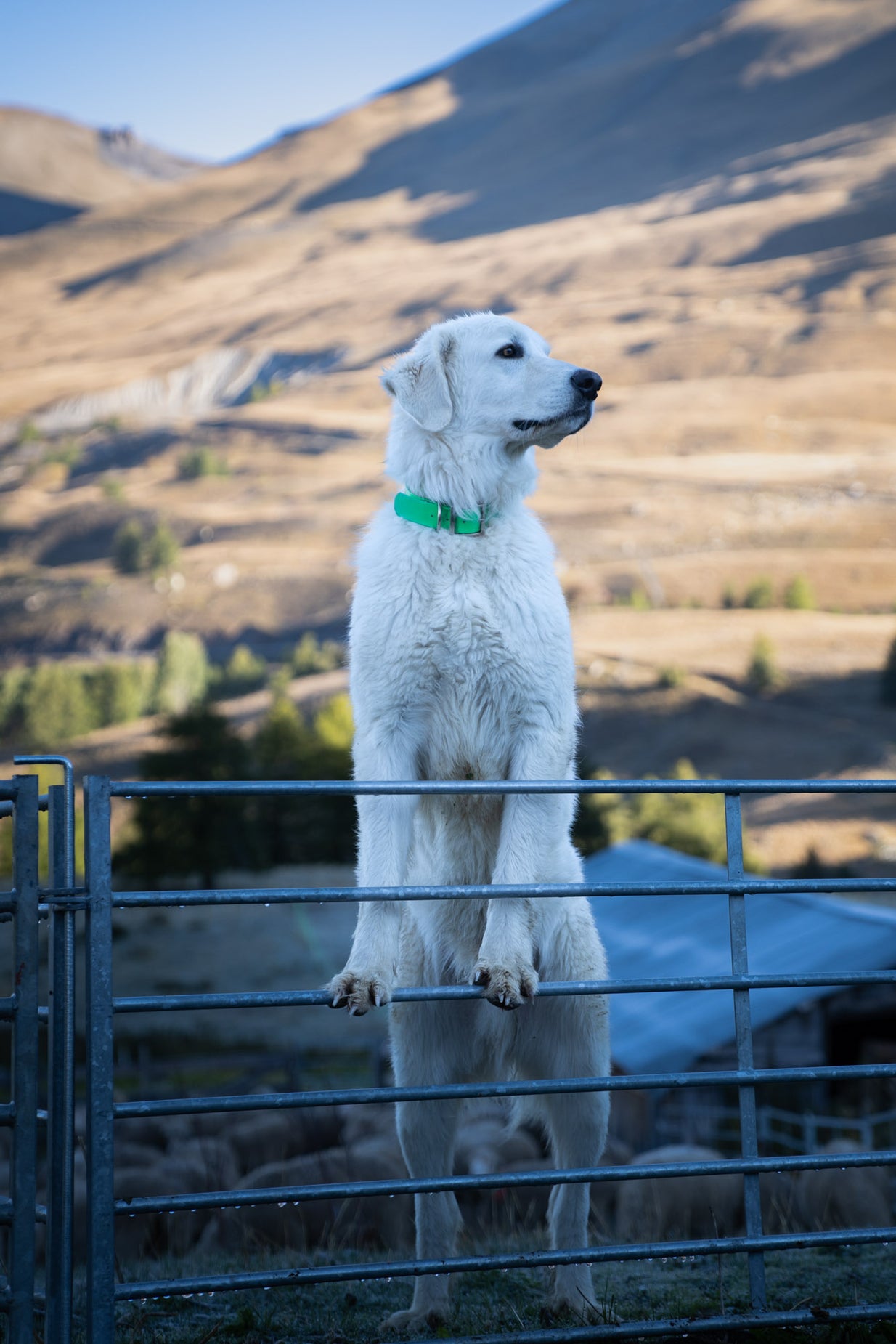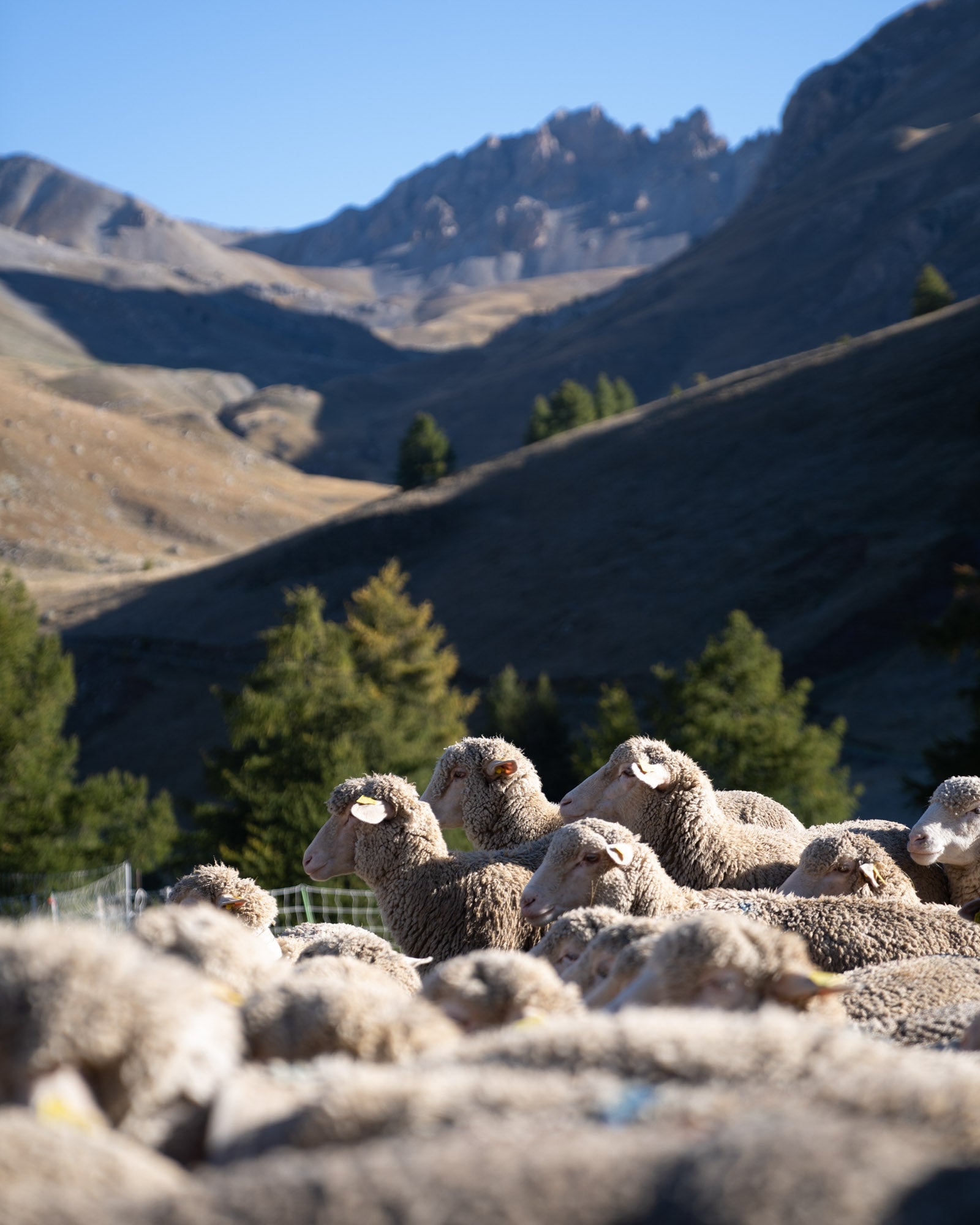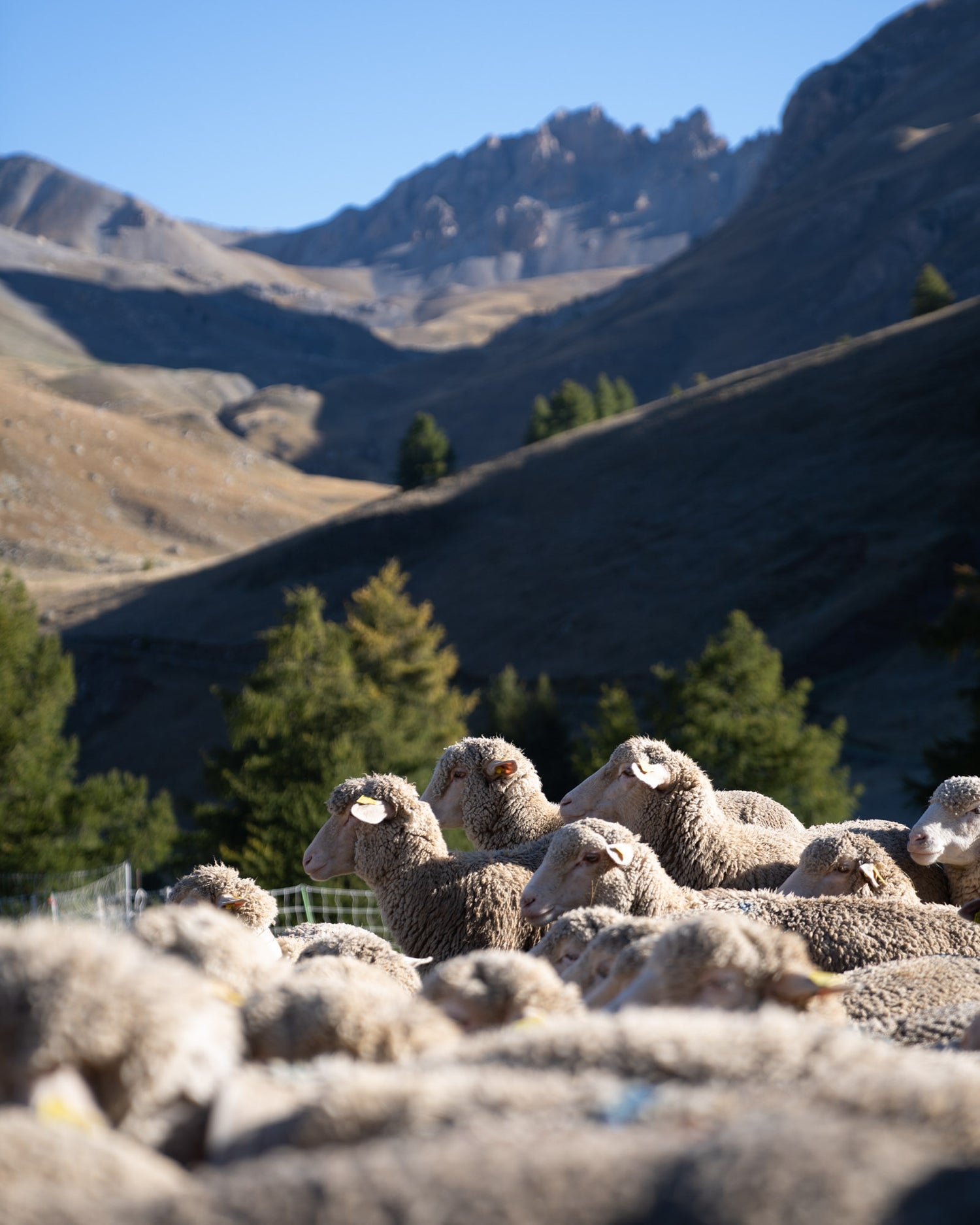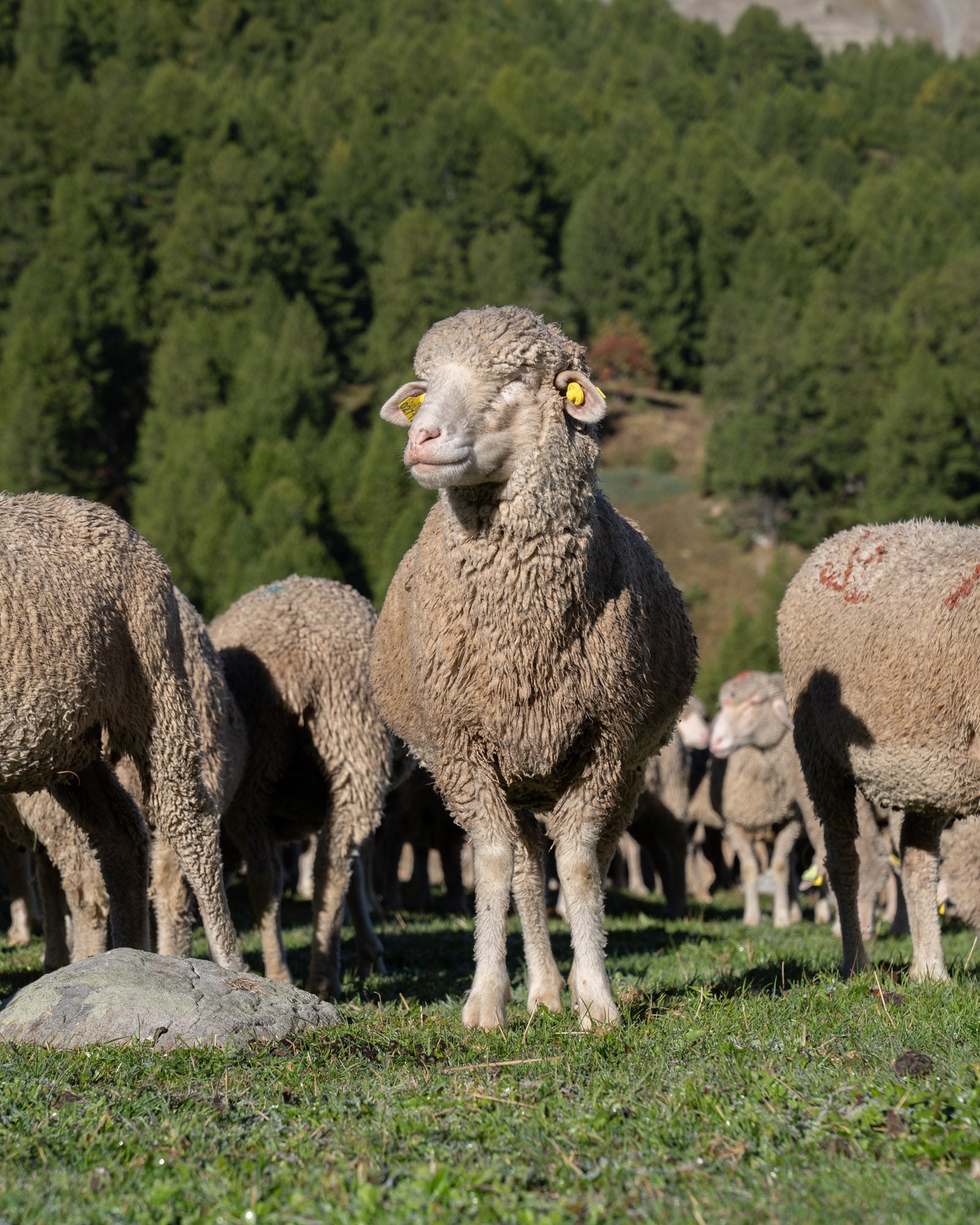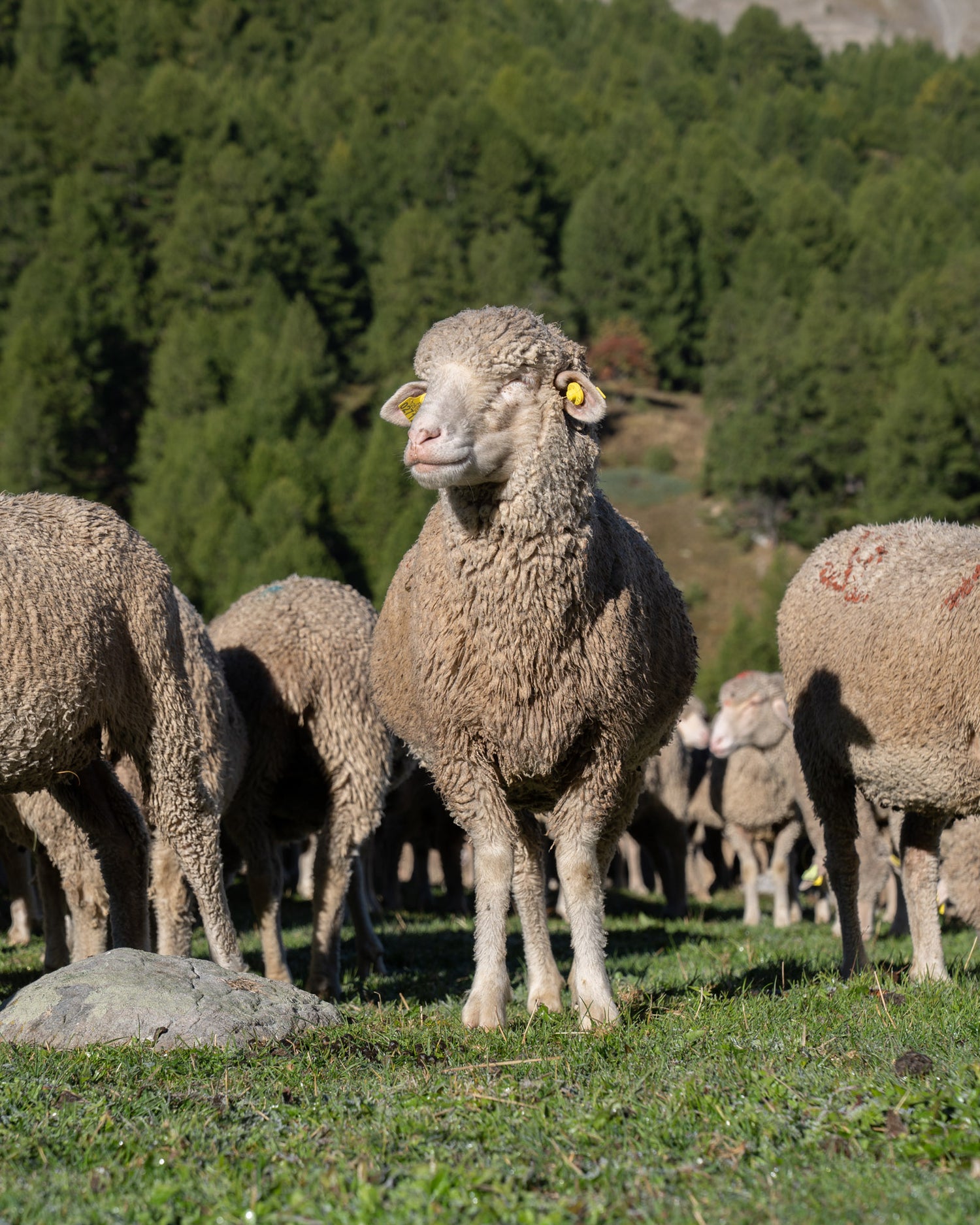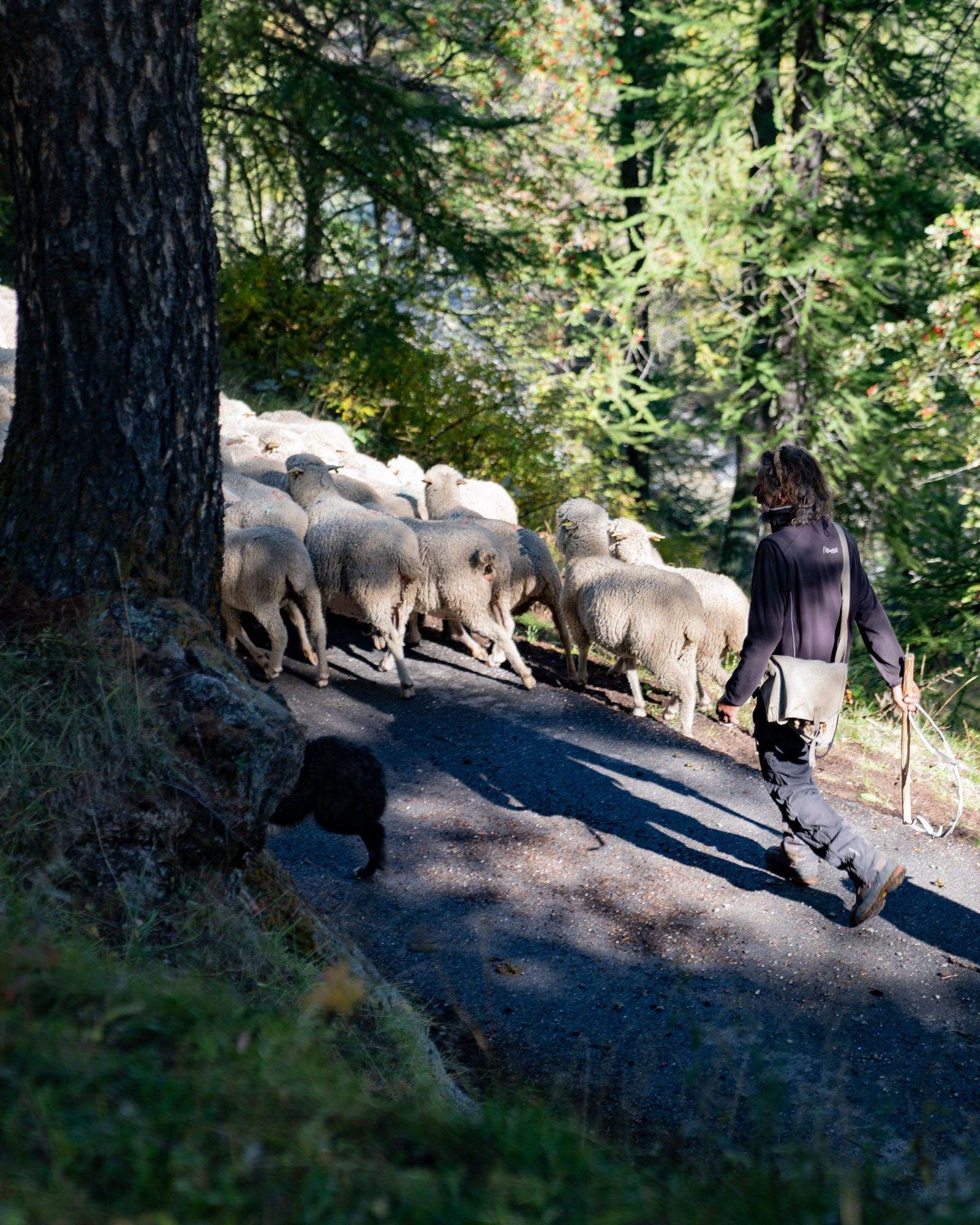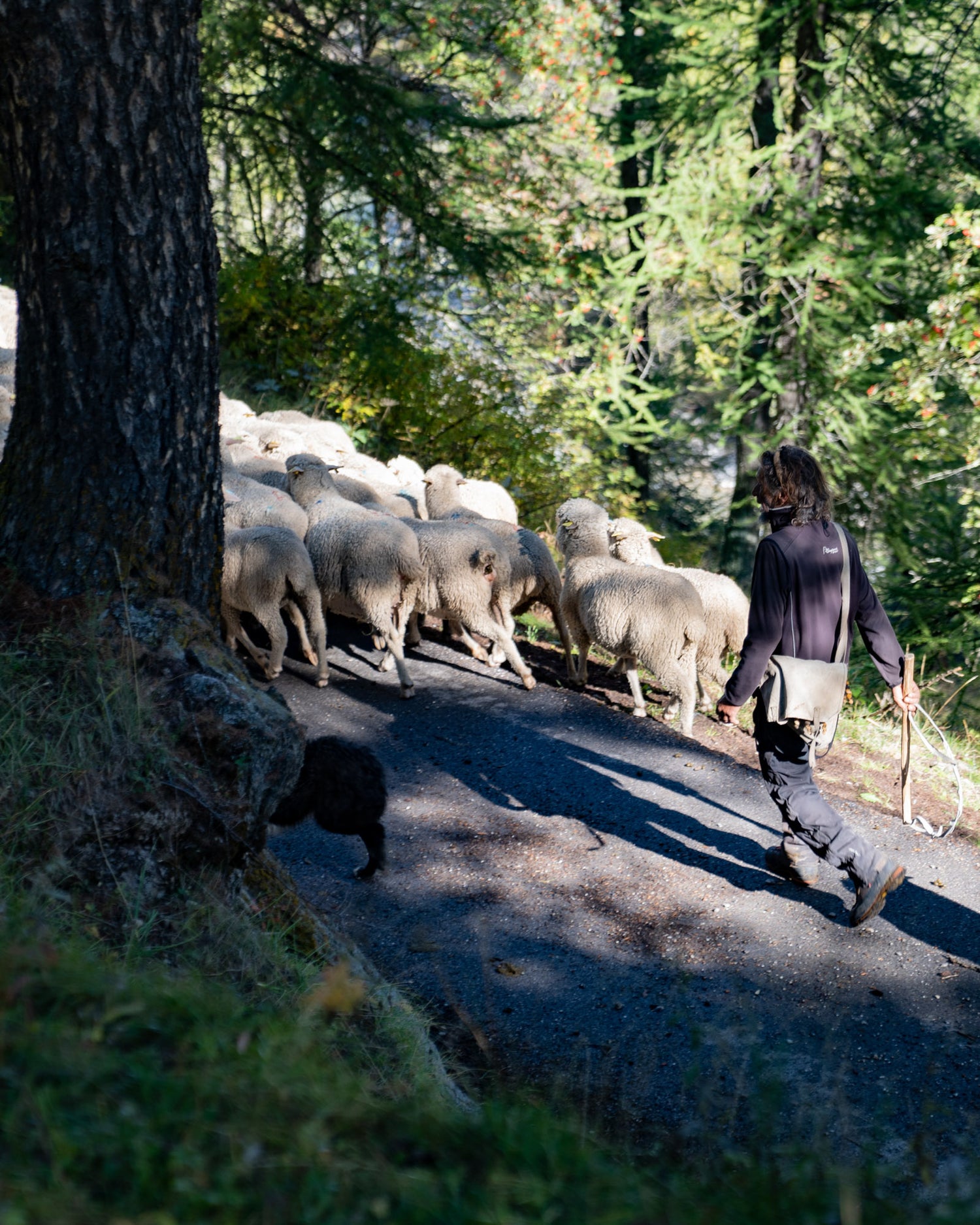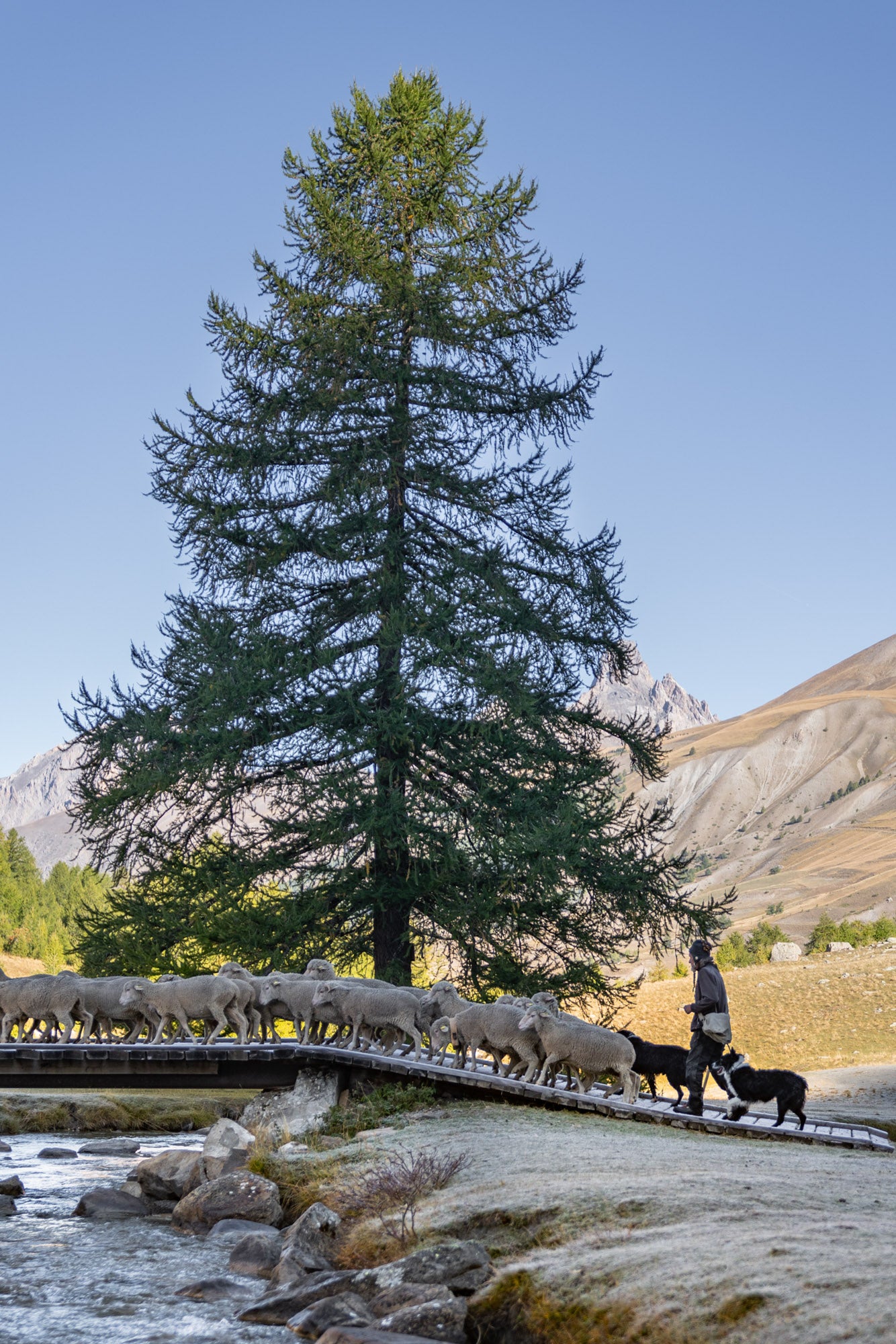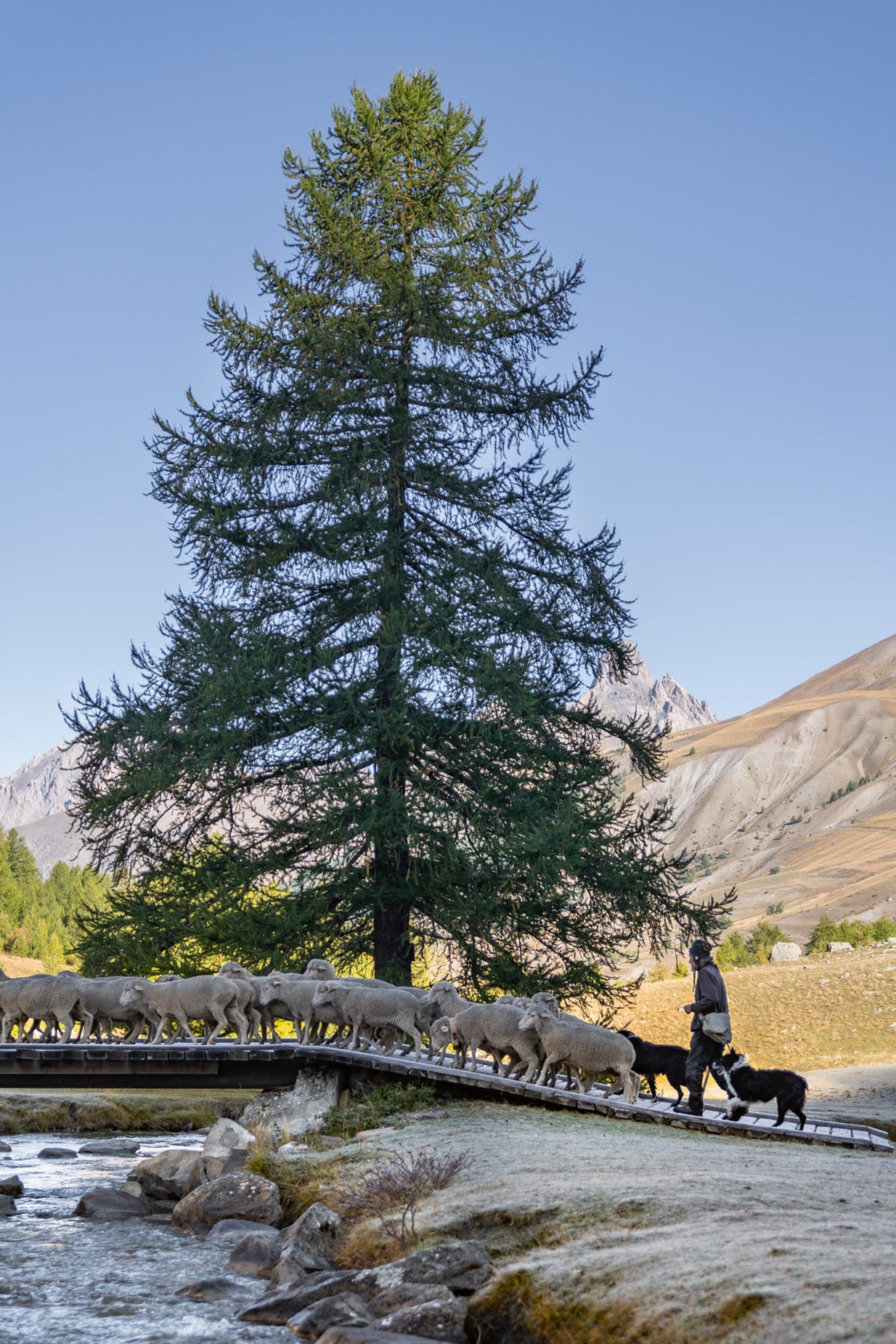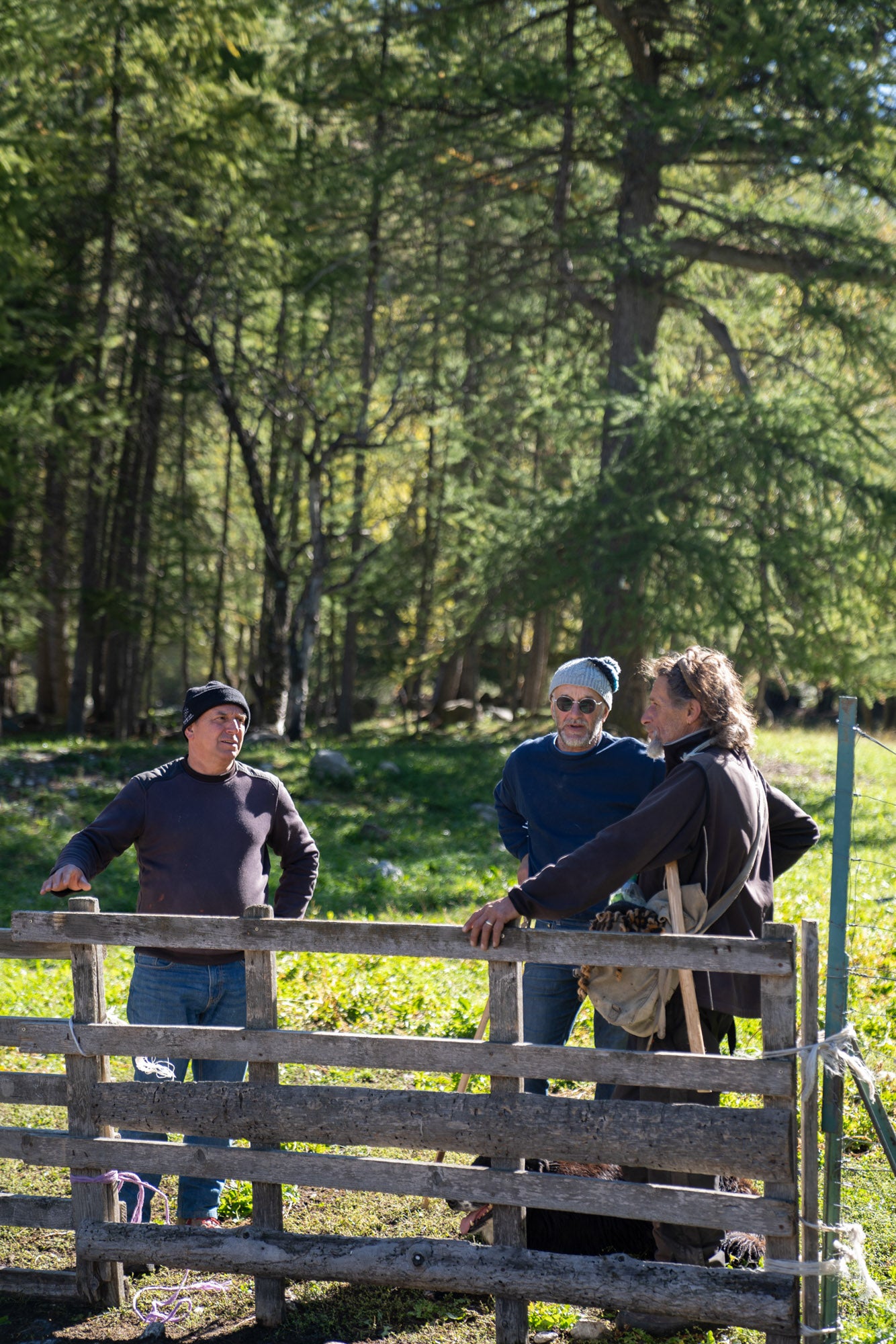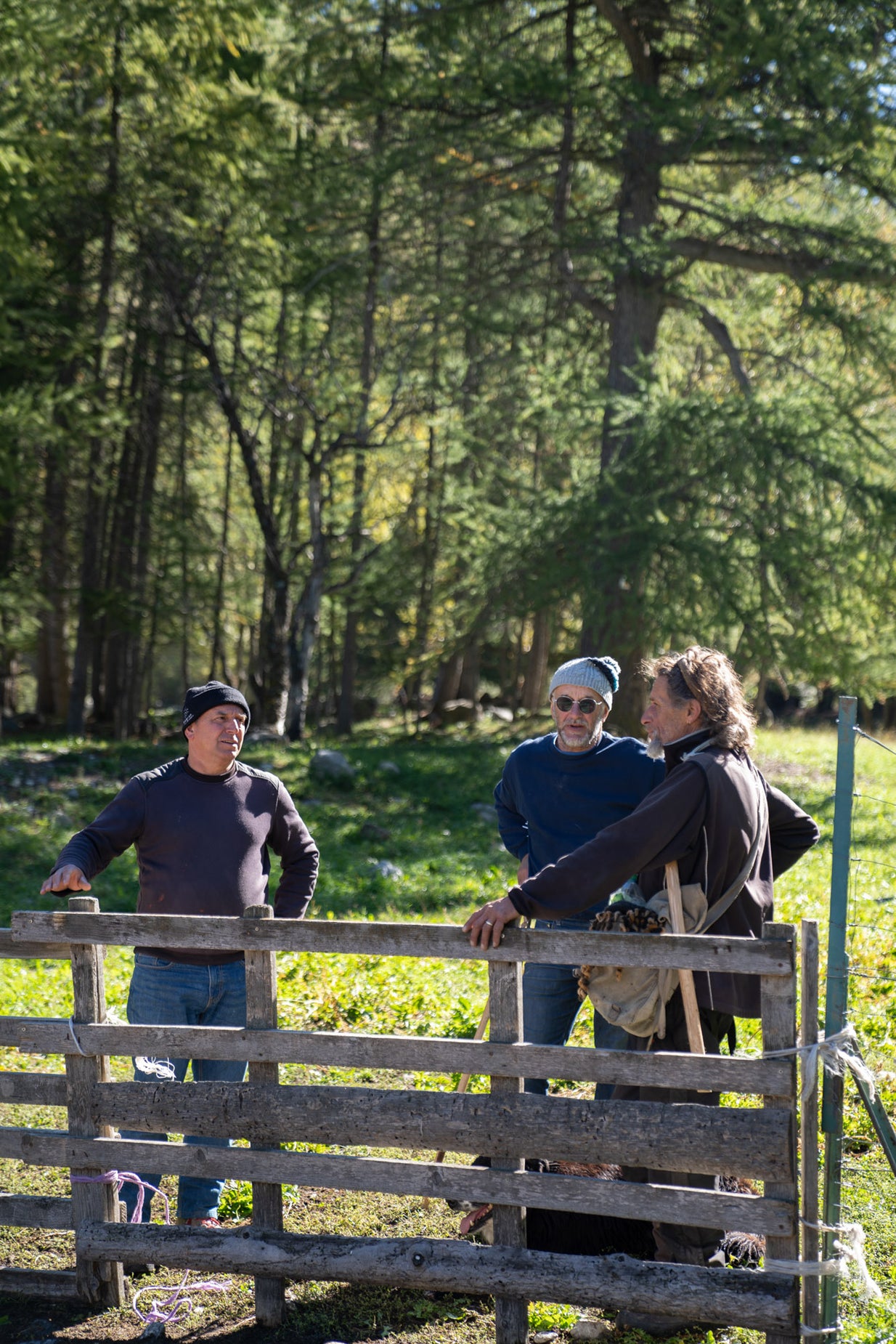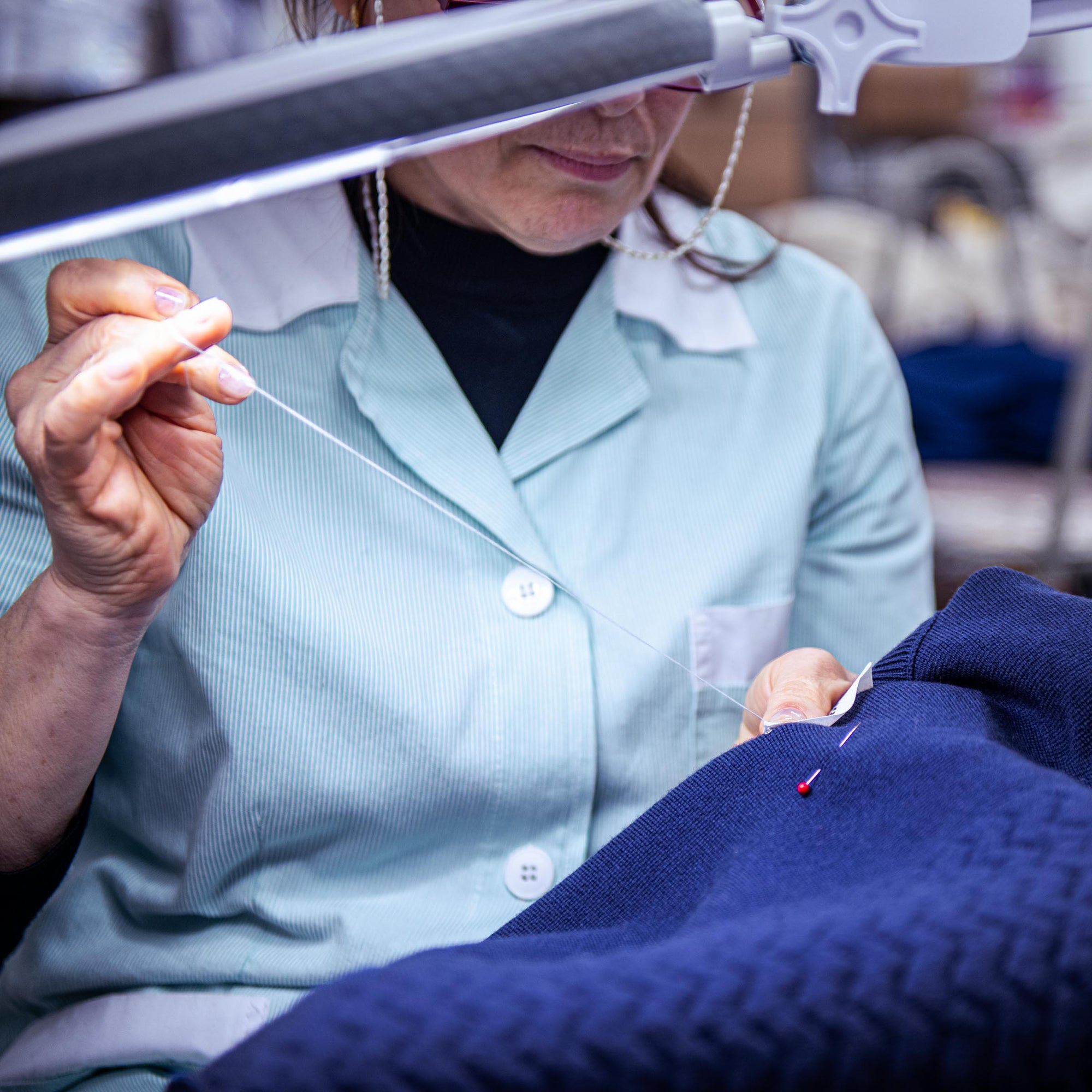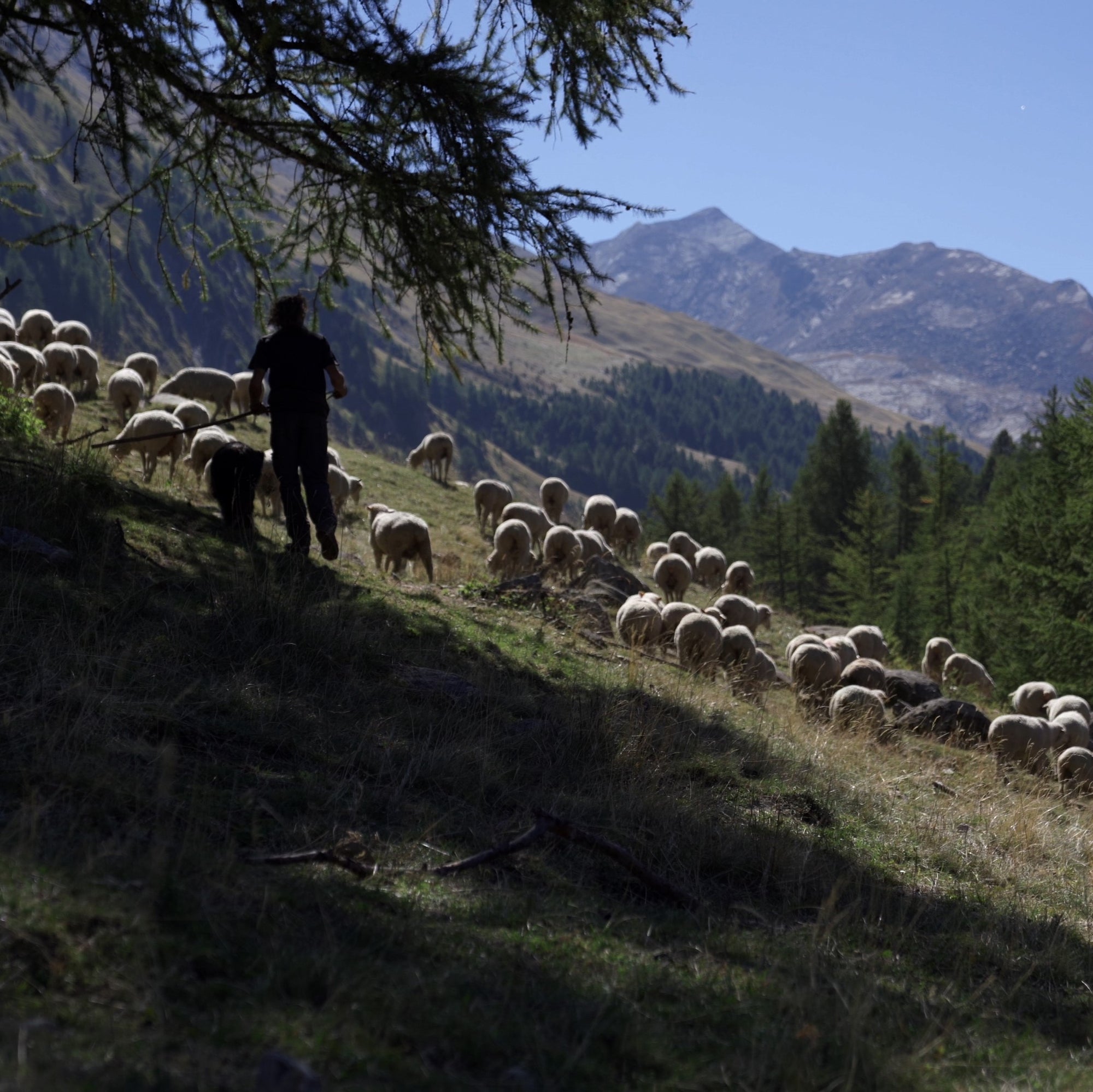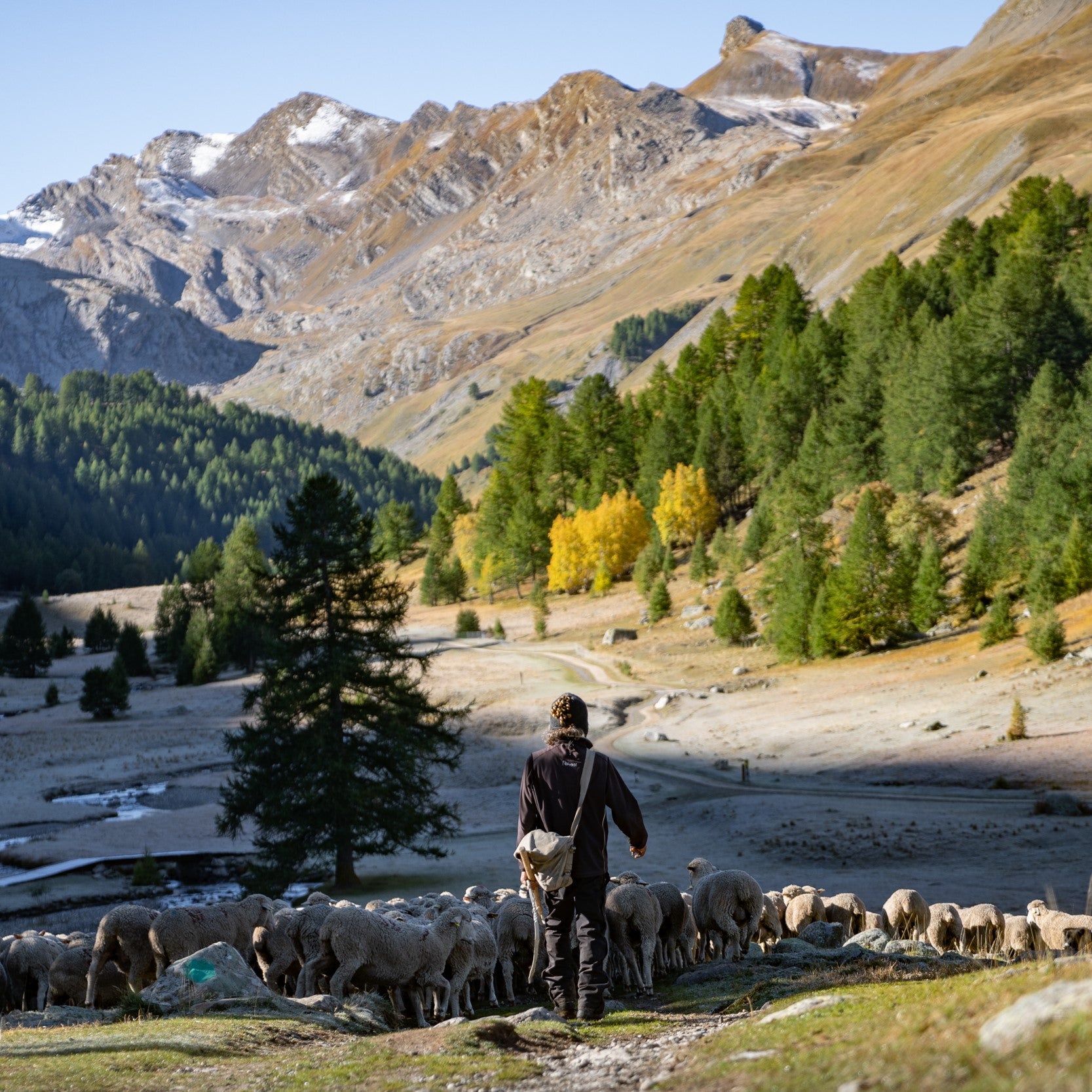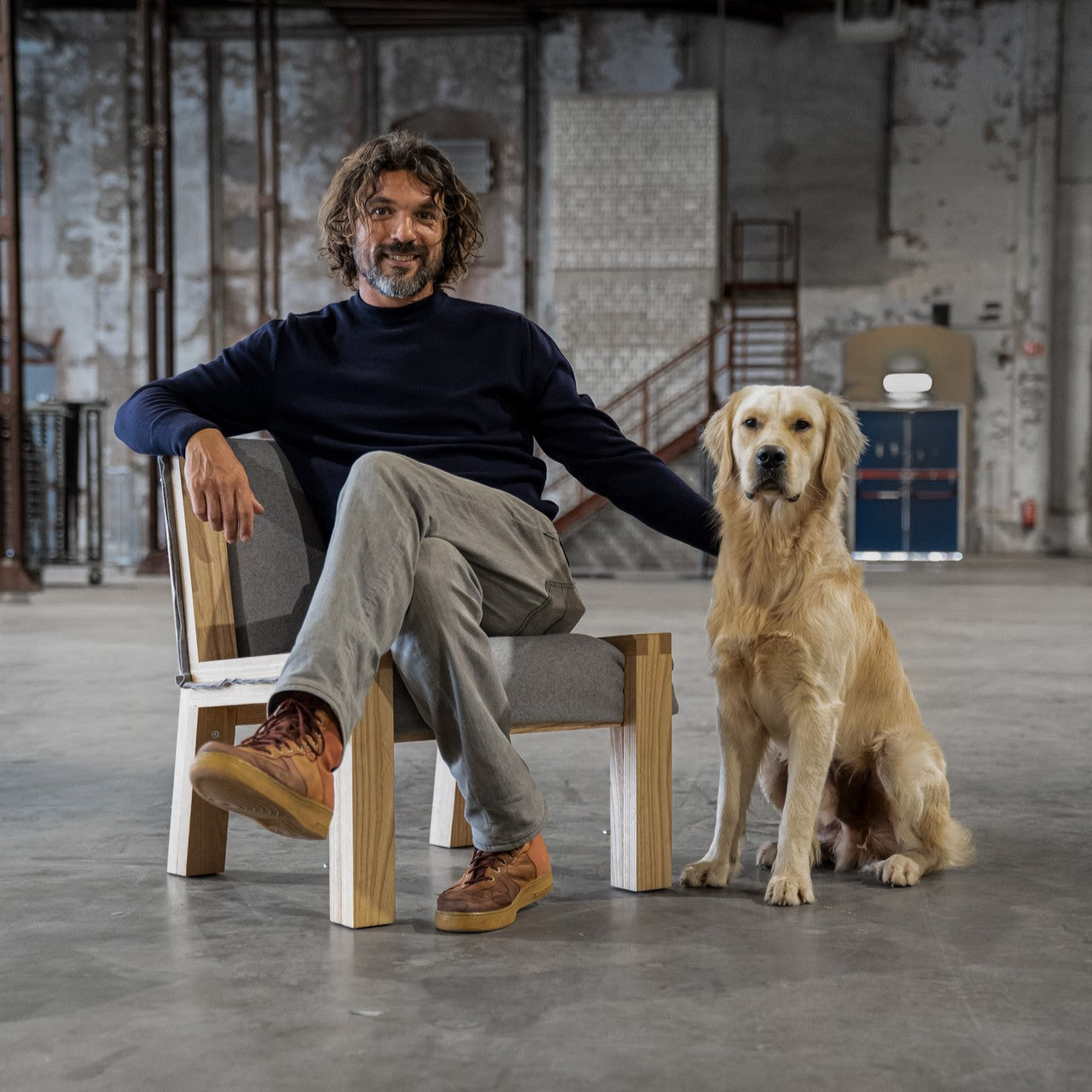UNCOVERING MERINO D'ARLES
Transhumance: A remaining relict of nomadic life
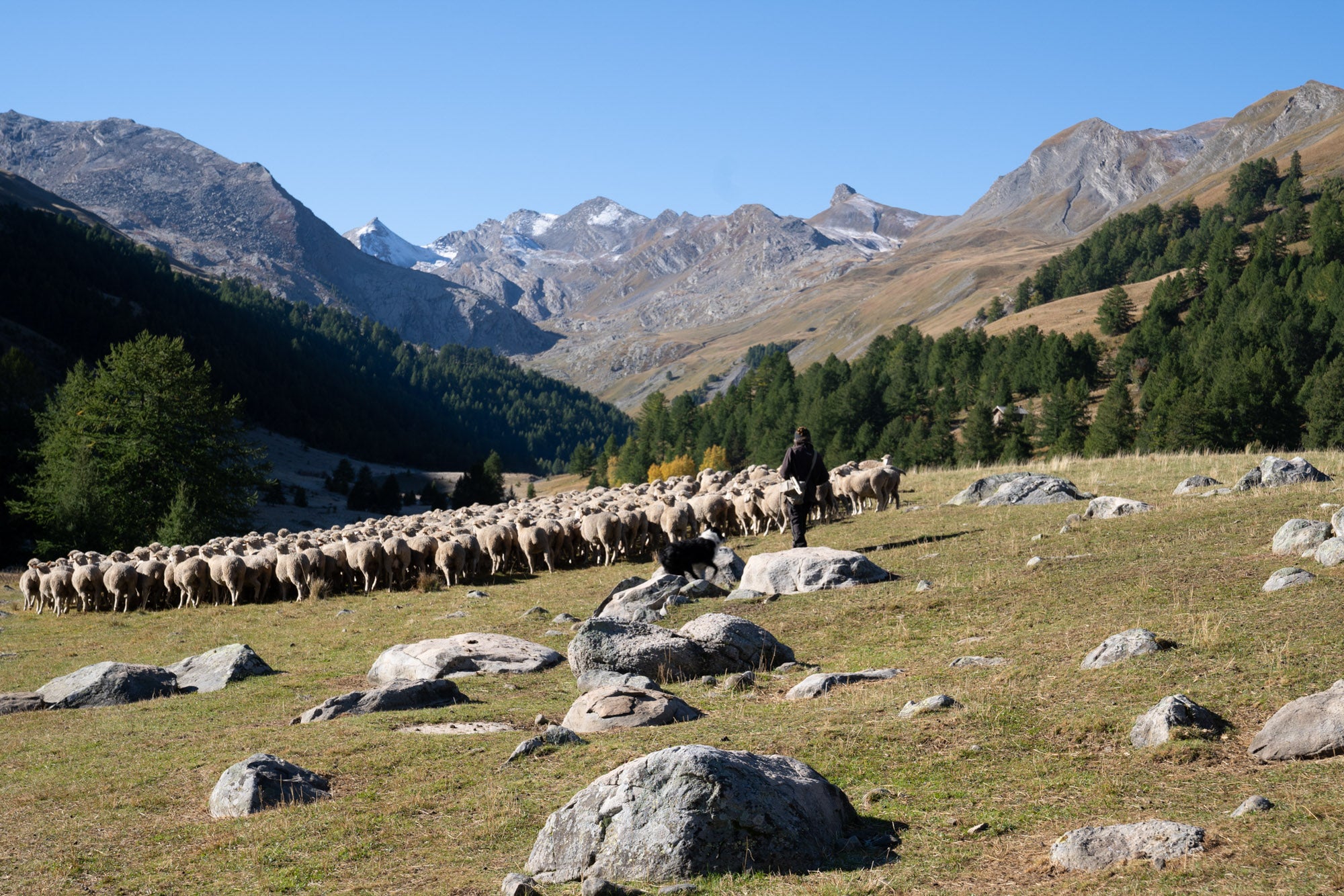
POSTED: May 7th 2023
For thousands of years the transhumance culture has existed in Europe, dating back to ancient times when pastoral societies moved their herds of livestock seasonally to graze in different regions. This age-old tradition has been woven into the cultural fabric of the continent. Like a timeless dance, herds of sheep and other livestock migrate seasonally from lowland areas to highland pastures to escape the dry plains of Southern France end of springtime.
In the south-east of France a group of around 70 quality breeders and 100 shepherds continue that dance till this day. This group is called the "Circle de Qualitè" and is scattered across the highlands and plains of the region througout the year. The Circle consists out of a flock of 60.000 sheep that share a genetic footprint that is closely related to the Merino d’Arles breed that came into existence almost 250 year ago. It is a breed with a rich history that produces more for the region than the quality yarns for our upcoming products.
During our most recent visit to Barcelonnette, we had the great fortune of meeting Sergio, a shepherd who, for five months in the year, lives at an altitude of 2.000 meters with his flock and trusty sheepdogs amidst the awe-inspiring valleys of the region. He is one of many shepherds in the south-east of France, who have devoted their lives to the art of shepherding and the ancient practice of transhumance, and pastoralism which lies at the very heart of the region.
As Sergio puts it: “Transhumance is not just about moving livestock from one place to another; it is a way of life that embodies a deep connection to the land and a commitment to preserving traditional knowledge and practices.” The ability to continue this way of life in the face of modernization and globalization requires a great deal of determination, adaptability, and resilience. In this sense, transhumance has become a symbol of the enduring strength and resilience of rural communities and their ability to adapt to changing circumstances while still maintaining a connection to their cultural heritage.
Etched in the cultural fabric
The significance of transhumance and pastoralism is etched in the cultural fabric of the Arles region, as is evident from the vibrant festivities and cultural events that celebrate the traditional migration of sheep from the Alps to the lowlands for the winter. Even the traditional stone buildings that dot the landscape, such as the bergères or stone sheepfolds, are a testament to the long history of transhumance in the region.
But cultural heritage is just one part of the story, equally important is the use of open pastures and sustainable grazing practices. This helps to preserve the natural environment and biodiversity of the region preventing soil erosion, reducing the risk of wildfires, and maintaining a healthy balance of flora and fauna ensuring that these magnificent landscapes will be around for generations to come.
Circle de Qualitè
One of the economic challenges that endangered this identity was the decline in wool prices due the emergence of synthetic fibres and the rise of China's textile industry. As a concequence the wool was no longer given the attention it deserved. The neglection of preparation, shearing and collection further deteriorated the wool quality and set in motion a viscous cycle that caused a further decrease in wool prices for the local breeders.
In order to break this negative cycle, a group of quality breeders was formed that still takes pride and has a vested interest in producing top-quality wool. Only sheep that have a close genetic match to the purebred Merino d´Arles are selected into the program. This group is known as the "Circle de Qualitè" and has established strict rules and standards regarding the animal welfare, clip preparation, shearing and packing processes.
The culmination from years of tireless effort and unwavering commitment has brought forth a high quality Merino wool yarn, woven with threads of cultural heritage that run deep within the very fabric of the Arles region. Crafting products from the Merino d'Arles fiber, touches the essence of creating knitwear for generations.
The wool not only possesses a unique functional character but also reflects the enduring pastoral traditions that have shaped the land for centuries, inspiring us to preserve its cultural heritage and traditions, so that they can continue to inspire and enrich us for generations to come.
Keep on reading
Merino d'Arles: A Product of European Heritage and Artisanship
An circular design ambition led to the discovery of Merino d'Arles and has taken us down ancient pastoral trails in France and into the workshops...
Uncovering Merino d'Arles PT2 - Une Narration De La Source
This contemplative short film immerses viewers in the serene and reflective world of a shepherd living in the picturesque valleys of Parc Mercantour. Exploring themes...
Natural Narratives - A lookbook amidst the elements
Our maiden venture amidst the elemental beauty of Bergen aan Zee, a realm in the North-West of the Netherlands where the serenity of the beach,...
Uncovering Merino d'Arles - PT1
Merino d’Arles: A breed with a rich history that produces more for the region than the quality yarns for our upcoming products.
Introducing - The Awareness Collection
in 2022, For the first time in our existence, we partook in the barrage of Black Friday deals with a one-off collection, designed for every...
A Casual Glimpse - UNBORN's Inaugural Studio Session
Natural, unscripted moments - no frills, no pretence, just quality knitwear that stands the test of time.
Healing the planet through design - A conversation with Melle Koot
Meet Melle Koot, a Dutch furniture and interior designer, trained in the Cradle 2 Cradle® methodology. His designs are inspired by stories and values and...
UNBORN: The Road to Circularity
Revisit our origin story, a testament to our commitment to creating responsible, long-lasting clothing. A journey from the heart of nature to the heart of sustainable...
